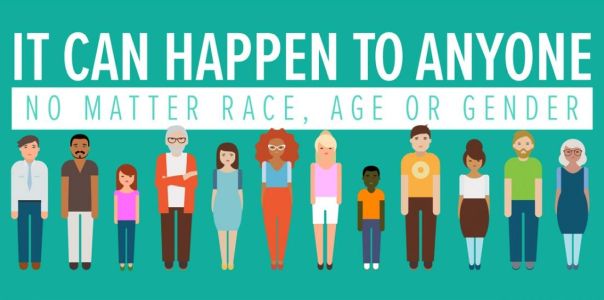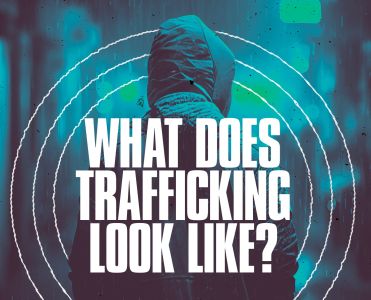
How to reduce the chances of those you love becoming a human trafficking statistic

January is Human Trafficking Prevention Month; and with January quickly coming to a close, police are urging the public to recognize potential warning signs in the hopes of reducing the chances of those we love becoming victims. According to the U.S. Department of Justice, a child is trafficked for the purpose of sexual exploitation every two minutes in the United States. There are also an estimated 24 million people trapped in human trafficking worldwide, according to the Center for Prevention of Abuse.
Victims of human trafficking become entrapped in a variety of ways. While many cases involve kidnappings, human traffickers often groom, manipulate, defraud and/or threaten victims to exploit them for commercial sex and/or labor. Three major airports, inexpensive bus transportation, train service along the East Coast, large sporting events and disposable income makes Maryland an attractive destination for traffickers.
Survivors can be anyone—men, women, adults, minors, U.S. citizens, legal permanent residents, or foreign nationals. However, human traffickers often target members of marginalized communities and other vulnerable individuals. Labor trafficking can happen in legal and illegal industries—in homes, common retail establishments, dance clubs, childcare, elder care, construction, factories, landscaping, health and beauty services, hotels, farms, forestry, or restaurants.
In 2019, the U.S. National Human Trafficking Hotline identified 22,326 trafficking victims and survivors, 11,504 situations of human trafficking, 4,384 traffickers, and 1,912 suspicious businesses.
Reducing the Chances of becoming a Victim
There are several basic steps the public can take to bring attention to the issue of human trafficking and reduce the chances of others becoming victims in the future, that include but are not limited to:
- Talking with children about the dangers of human trafficking.
- Monitoring your child’s online activity.
- Know community resources available to victims of human trafficking.
- Recognize potential red flags of potential human trafficking victims, such as:
- Showing a lack of interest in previous activities
- Becoming isolated from regular friends
- Unexplained access to cash, expensive items, clothing, etc…
–
Know the Signs
(Note: Not all the indicators listed are present in all trafficking situations.)
A Person May Be Trafficked If They:
- Cannot leave their work environment or cannot quit to find another job
- Do not have control over their wages, money, or finances
- Show signs of physical abuse or injury
- Are accompanied everywhere by someone who speaks for them or allows others to speak for them when addressed directly
- Appear to be fearful of or under the control of another person
- Owe money to an employer or another person whom they feel bound to repay
- Have health issues that have not been attended to
- Describe moving or changing jobs suddenly and often
- Are unfamiliar with the neighborhood where they live or work
- Are not working in the job originally promised to them
- Are traveling with minimal or inappropriate luggage/belongings
- Lack identification, passport or other travel documents or do not have control over their documentation
- Provide sexual services in a strip club, massage parlor, brothel or other locations and have a manager or pimp
- Are a laborer, domestic servant or caretaker but never leave the home or workplace
- Are unable to freely contact friends or family
- Are not allowed to socialize or attend religious services
- Have restricted freedom of movement
- Are a juvenile engaged in a commercial sex act
- Are threatened or afraid of being handed over to the authorities
- Are forced to work under certain conditions
- Work excessively long hours over long periods
–
Trafficked Persons May Be Reluctant to Report or Seek Services Because They:
- Do not know or understand that they are being exploited, or “trafficked”
- Are threatened that if they tell anyone, they or their families will be hurt
- Have complex relationships with their traffickers that involve deep levels of psychological conditioning based on fear or misplaced feelings of love
- Are unfamiliar with their surroundings and do not know whom to trust
- Do not know help exists, how to access it, or where to go for it
- Are unfamiliar with the laws, cultures, and languages of the destination location or country
- Fear retribution and forcible removal or deportation
- Fear law enforcement and other authorities
- Are addicted to drugs
- Are in debt to their traffickers
- Are sending much needed money back ‘home’ and worry about not being able to do this.
For a more comprehensive list of both general and specific indicators regarding children, sexual exploitation, trafficking for labor, and begging and petty crime, read the UN Office on Drugs and Crime publication, Human Trafficking Indicators.
If you see someone in danger, contact 911 immediately. There are also several hotlines you can call for assistance and other outreach, including:
- BeFreeTextline – Text HELP to 233733 (BEFREE)
- National Human Trafficking Hotline – 1-888-373-7888
- National Center for Missing and Exploited Children – 1-800-843-5678 (1-800-THE-LOST)
For more on this very important topic, see the video accompanying this article.
(Sources, Maryland State Police, Human Trafficking Research.org)
(Cover photo, Image credit: Facebook)
Posted by Richard Webster, Ace News Today / Follow Richard on Facebook, Twitter & Instagram






